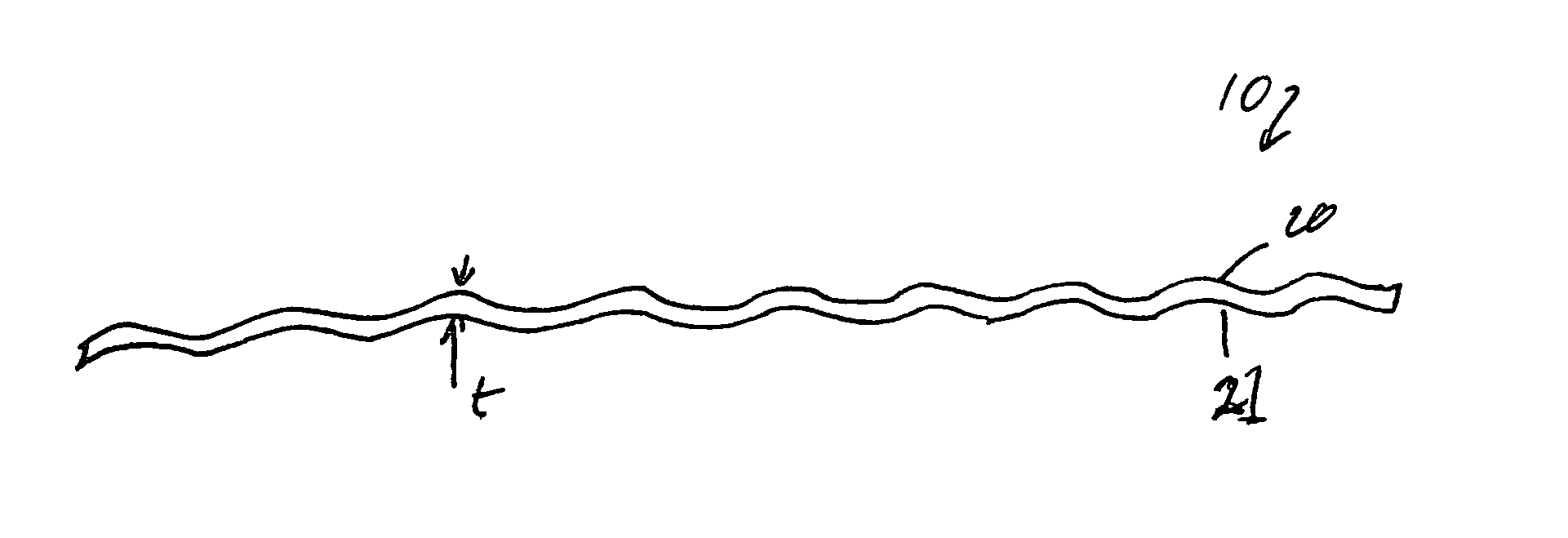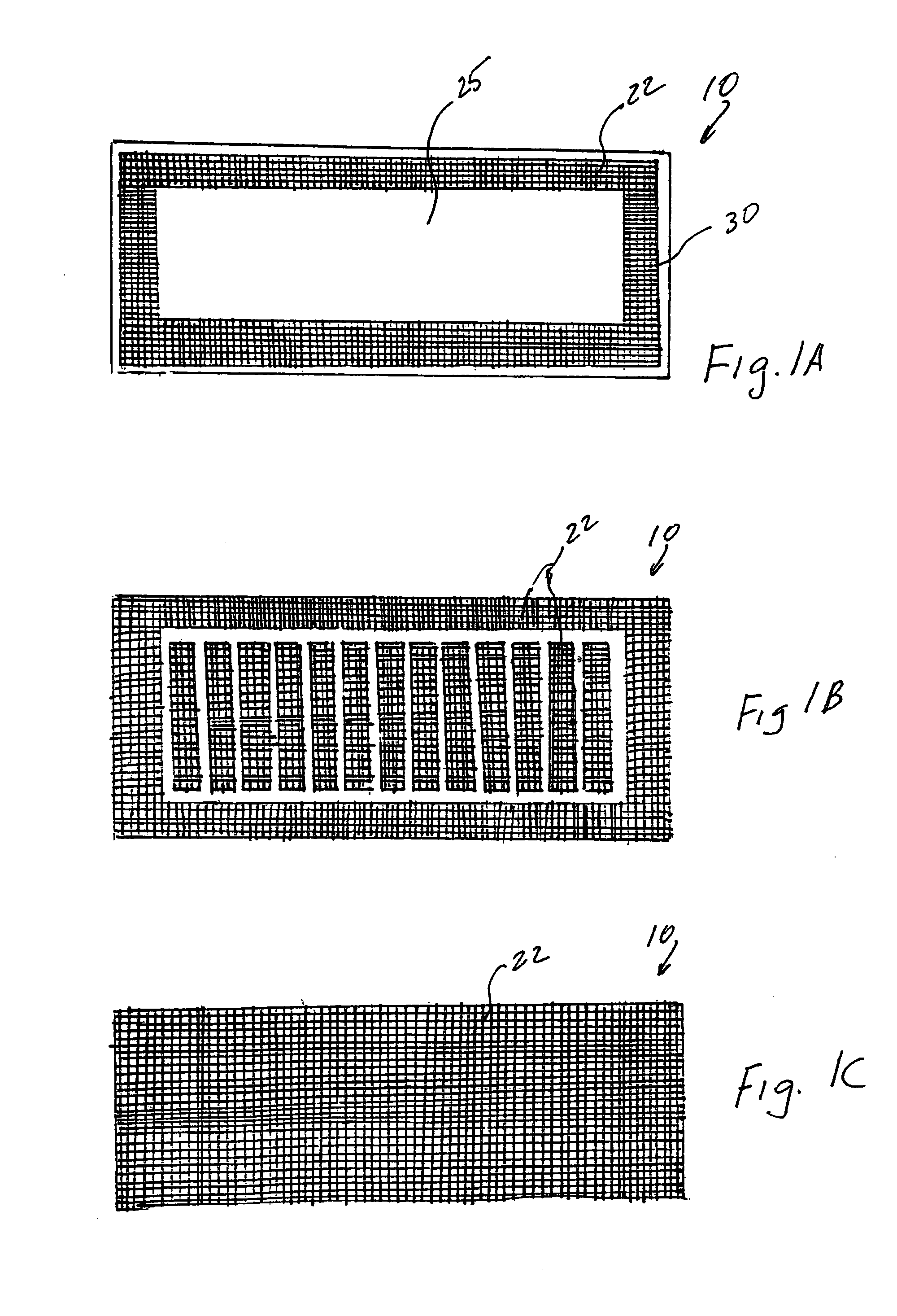Electrolyte sheet with a corrugation pattern
a technology of electrolyte and corrugation pattern, which is applied in the manufacture of final products, fuel cell details, electrochemical generators, etc., can solve the problems of physical weakening of electrolyte, not describing the thickness of the electrolyte, so as to improve or maintain structural strength, maintain electrode adhesion and uniform flexing ability, and increase multi-axial strain tolerance
- Summary
- Abstract
- Description
- Claims
- Application Information
AI Technical Summary
Benefits of technology
Problems solved by technology
Method used
Image
Examples
example 1
Preparation of a Ceramic Slip
[0069] A ceramic slip is made containing 100 grams of zirconia powder using the components shown in Table 1, below.
TABLE 1Components of Slip BatchComponentManufacturerFormFunctionBatch massZirconia TZ-3YTosohpowderceramic100.0 g EthanolMallinkrodtliquidsolvent36.36 g 1-ButanolFisherliquidsolvent8.79 gPropylene GlycolFisherliquidsolvent2.00 gWater (distilled)liquidsolvent2.50 gEmphos PS-21AWitcoliquiddispersant1.00 g
[0070] All ingredient bottles are kept tightly closed until used to reduce water pickup. A 250 ml Nalgene® polyethylene plastic container is cleaned by rinsing twice with about 10-20 ml of ethanol or methanol. The container is then placed in a 70° C. drying oven to evaporate the alcohol. After drying, the container and lid are weighed. The zirconia powder is weighed out in a weighing boat and set aside. The ethanol is pipetted into the dried Nalgene container. The 1-butanol is then pipetted into the plastic container. Subsequently, propylen...
example
[0079] The invention will be further clarified by the following example.
[0080] The electrolyte sheet 10 of FIG. 1 was made as follows: [0081] i. In a filtered air “clean” environment, 125 micron thick Teflon® film is smoothed out on a glass plate and then attached to the glass plate with tape. [0082] ii. A slip of zirconia-3 mole % yttria powder is coated on the Teflon® coated cloth using a tape casting “doctor” blade with a 50 micron gap and a 15 cm width, forming a green pre-ceramic sheet. [0083] iii. The sheet was dried for ½ hour at room temperature under a plastic cover that encased the drying green pre-ceramic sheet, with about a 2 mm gap along the width of the ceramic sheet but no gap along the long edges. [0084] iv. The green sheet was then dried in an oven at 60° C. for 1 hour. [0085] v. The green sheet is then corrugated, for example using the vacuum forming method described above, with a mold having a pattern of unit cells corresponding to the electrolyte sheet 10 of FIG...
PUM
| Property | Measurement | Unit |
|---|---|---|
| thickness | aaaaa | aaaaa |
| thickness | aaaaa | aaaaa |
| thickness | aaaaa | aaaaa |
Abstract
Description
Claims
Application Information
 Login to View More
Login to View More - R&D
- Intellectual Property
- Life Sciences
- Materials
- Tech Scout
- Unparalleled Data Quality
- Higher Quality Content
- 60% Fewer Hallucinations
Browse by: Latest US Patents, China's latest patents, Technical Efficacy Thesaurus, Application Domain, Technology Topic, Popular Technical Reports.
© 2025 PatSnap. All rights reserved.Legal|Privacy policy|Modern Slavery Act Transparency Statement|Sitemap|About US| Contact US: help@patsnap.com



